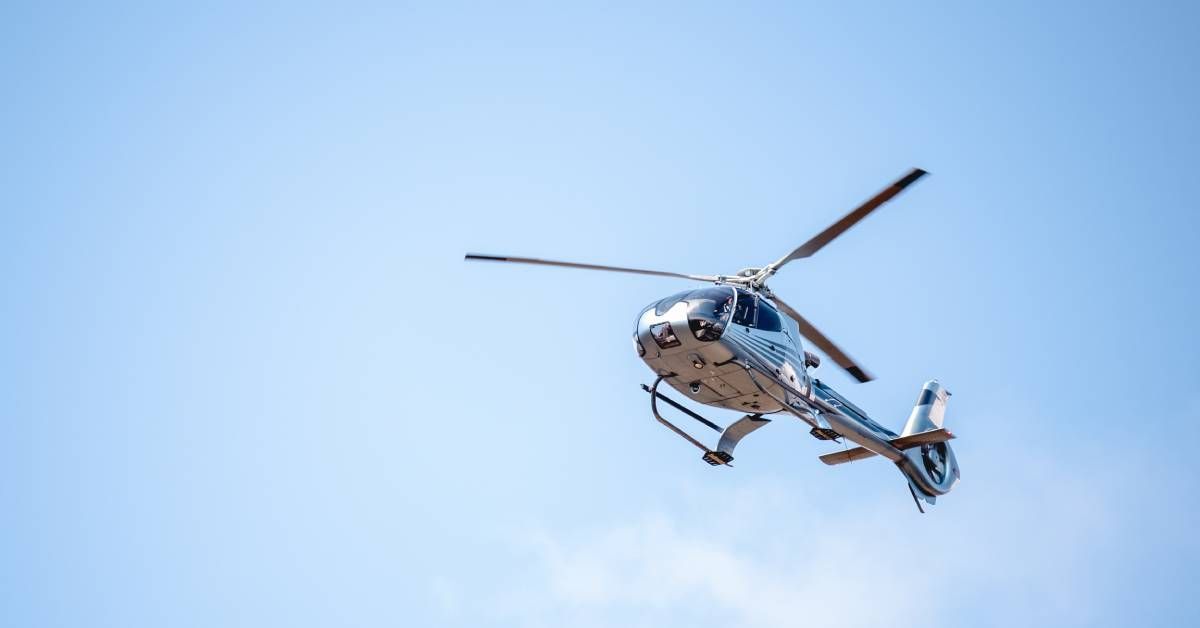How To Become a Helicopter Pilot: Key Things To Know
The allure of helicopter piloting is undeniable. Becoming a helicopter pilot is a dream for many. This career promises an adventurous life, from the thrill of ascending vertically into the sky to the unique perspective it offers with the added satisfaction of mastering a highly specialized skill.
This guide will provide you with a comprehensive roadmap to becoming a helicopter pilot, whether you’re an aspiring aviator or a seasoned professional eyeing a career change. Here’s how to become a helicopter pilot and the key things to know.
Section 1: Educational and Training Requirements
You need a solid educational foundation to embark on a career as a helicopter pilot. While a high school diploma is the minimum requirement, aspiring pilots can opt for higher education to enhance their prospects. Emphasizing subjects like mathematics, physics, and English can provide a robust groundwork.
You may even choose to pursue a degree in aviation, aerospace engineering, or a related field. Achieving an advanced education bolsters your knowledgebase and makes you a more attractive candidate to potential employers.
Specialized Helicopter Pilot Training
After meeting the basic educational requirements, the next step is specialized training. Enrolling in a flight school accredited by the Federal Aviation Administration (FAA) or the equivalent in your country is essential. Here, you’ll undergo both ground school and flight training.
Obtaining your Private Pilot License (PPL) allows you to fly a helicopter for personal use. You’ll need a Commercial Pilot License (CPL), which involves more rigorous training and a higher number of flight hours to operate a helicopter professionally.
These growth opportunities are one of the great things about piloting. For example, you may want to get your PPL just to fly around as a hobby, which can be fun, serene, and satisfying.
Then, maybe you choose to become a professional pilot or a flight instructor—the opportunities are there if you want to pursue these aspirations. Next, we’ll dive into the key skills and qualities you need to reach these career heights.
Section 2: Key Skills and Qualities
Being a helicopter pilot requires more than just technical know-how. Certain personal qualities can significantly impact your success in this field.
Precision is crucial in aviation as pilots must meticulously follow protocols and checklists to ensure safety. Failure to do so is dangerous, potentially resulting in major accidents on the runway or in the skies.
A helicopter’s design may not appear as complex as a plane’s, but it is and requires absolute precision and safe handling. Effective communication with air traffic control, passengers, and crew is essential, while good health and sharp reflexes are vital for handling the physical demands of piloting.
Problem-Solving and Decision-Making
Quick thinking and resourcefulness are core skills for a successful piloting career. Pilots must make swift decisions under pressure, especially in emergency situations.
Being able to think on your feet and utilize available resources efficiently is a hallmark of a competent pilot. Now that you know more about the educational and skill set requirements that make a good pilot, we can highlight the key steps to take to achieve your desired license.

Section 3: The Licensing Process
Obtaining your PPL or CPL is a complex process that requires dedication and perseverance. The journey begins with securing an FAA Medical Certificate, proving you meet the health standards required for piloting. You must also be at least 17 years old and can read, speak, and understand English.
Next, you must complete ground school training, covering topics like aerodynamics, navigation, and aviation regulations. Accumulating the necessary flight hours under the supervision of a Certified Flight Instructor (CFI) is a vital part of your training.
You’ll need to log at least 40 hours for your PPL, and then you will need to pass the FAA written exam to test your knowledge. An FAA examiner will then administer a practical flight test to determine your flying skills and knowledge.
Different Types of Helicopter Pilot Licenses
Various licenses are available to consider, beginning with the Private Pilot License (PPL) for personal, non-commercial use. The Commercial Pilot License (CPL) allows for professional piloting. The Airline Transport Pilot License (ATPL) is the highest level of pilot certification, necessary for those wanting to become airline captains.
Of course, this information may sound like a lot for someone trying to get into piloting. However, you won’t always have to run around to different places for each step. For example, our helicopter flight lessons at Arapahoe Flight Club include courses for private helicopter pilot training, commercial helicopter pilot training, and more.
Section 4: Career Paths and Opportunities
Helicopter pilots have a multitude of career paths to choose from, each offering unique experiences. Emergency Medical Services (EMS) pilots provide critical patient transport and medical support.
Law enforcement pilots assist with surveillance, search and rescue, and public safety missions. Those in tourism offer scenic tours and provide unforgettable experiences to tourists, while corporate and private transportation pilots fly executives and VIPs to their destinations.

Section 5: Tips for Aspiring Pilots
It is beneficial to start working toward your flight hours as soon as possible for those considering a career in helicopter piloting. Building connections within the aviation industry can facilitate learning about job opportunities and gaining insights from experienced pilots.
That said, don’t let that deter you if you’re a career changer looking for a big shift. You can start working toward your logged hours goals now, whether you’re 18 or 48.
Staying updated with advancements in aviation technology and regulations is crucial. Finding a mentor who can provide guidance and support throughout your training and early career can be incredibly valuable.
Section 6: Taking Flight Today
Now that you’re aware of the key things to know when becoming a helicopter pilot, you’re one major step closer to taking flight. Embarking on the path to becoming a helicopter pilot is an exciting and rewarding endeavor. With the right education, training, and dedication, you can soar to new heights in this dynamic field.
Every great pilot started where you are today—with a dream and the determination to make it a reality. Take the next step toward your aviation career and enjoy the journey ahead. Join our community of aspiring pilots and industry professionals.
